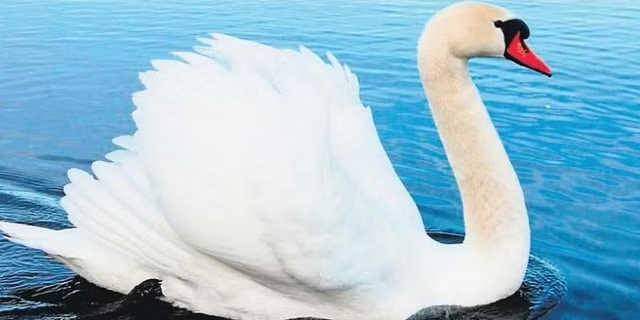Public perceptions matter in the conservation of rivers
- The ability of rivers to sustain biodiversity and deliver ecosystem services is governed by the degree to which their natural flow regime and connectivity are maintained.
- No matter how one perceives a river, whether based on its existence, importance to human or key to progress, if rivers are destroyed, civilisations will perish.
- In India, dams are often symbols of development in the popular mind. It’s important to build public perceptions around the ecosystem values of rivers, writes Ranjan K. Panda in this commentary.
- The views in this commentary are that of the author.
The other day I asked my friends on social media: What is that one word which comes to their mind when they see a river? Hundreds of them replied and almost everyone said they felt river means water, life. Many equated rivers with freedom, flow of life. For many years I had been wondering if fellow human beings had completely distanced themselves from rivers. These responses disproved me to an extent. There are still some people who have rivers in their minds, and some in their hearts as well. That’s the reason, in a world of blatant consumerism, where rivers and other water bodies are considered as commodities only, there are people that still feel for rivers.
Freedom to flow
To me, the most important perception about rivers – as reflected in the responses to my social media posts – is its freedom to flow. Perceptions vary from person to person, from generation to generation, from society to society, from geography to geography. No matter how one perceives a river – on its existence, importance in human life or progress – one thing is for sure, civilisations will perish if rivers are destroyed. Humans are also killing rivers with their fanciest act – “development”. Some of the friends said this in their response.
Dams are said to be one of the major causes of destruction of rivers. They obstruct and alter the flow of rivers. Dams have definitely brought in benefits to societies and no matter how much ecologists want them to be removed, the policy makers will continue to build dams. However, at a time when the whole world is talking about the importance of preserving ecosystems, including rivers, to be able to fight against climate change, it is worthwhile to discuss some of the impacts of the dams on biodiversity.
Dams and biodiversity
There are roughly about 60,000 large dams in the world at present. Dams have been providing water security to pockets of population served by their reservoirs; the dams with hydropower projects have added to energy security; so on and so forth. Dams have been built for hundreds of years to provide all such benefits to human civilisations. However, dams do have their negative impacts on the biodiversity of the rivers as well as related ecosystems.
In fact, dams are considered to be among the major threats to freshwater biodiversity. Ironically, it is this biodiversity that is not only required for the rivers to stay alive, but also for millions of people dependent on it for their livelihoods and other benefits. Dams fragment the habitats of freshwater species, alter hydrology of rivers and affect freshwater ecosystems by inundation. Fragmentation of the freshwater environment has major implications for freshwater fish as dams obstruct migration routes, essential for spawning or feeding, and limit dispersal.
A comprehensive global analysis on the impacts of fragmentation of habitat, covering about 10000 freshwater fish species and 40000 existing large dams, found out that freshwater fish are highly threatened by dams that disrupt the longitudinal connectivity of rivers and may consequently impede fish movements to feeding and spawning grounds. This study identified the most disconnected geographical ranges for species in the United States, Europe, South Africa, India, and China.
This study further found out that, “while an estimated ∼50% of the river volume is currently altered by either flow regulation or fragmentation, the pending construction of ∼3,700 major hydropower dams is expected to increase this to 93%.”
Hydropower dams, climate actions and health of rivers
As the world moves towards discussing the landmark new UN biodiversity framework, and world governments are gearing up for the next Conference of Parties COP26 to accelerate actions towards the goals of Paris Agreement and the UN Framework on Climate Change, it’s timely to discuss the impacts of hydropower dams on river ecosystems especially because such projects are being promoted as one of the important climate actions.
A comprehensive global analysis on the impacts of fragmentation of habitat, covering about 10000 freshwater fish species and 40000 existing large dams, found out that freshwater fish are highly threatened by dams that disrupt the longitudinal connectivity of rivers and may consequently impede fish movements to feeding and spawning grounds. This study identified the most disconnected geographical ranges for species in the United States, Europe, South Africa, India, and China.
This study further found out that, “while an estimated ∼50% of the river volume is currently altered by either flow regulation or fragmentation, the pending construction of ∼3,700 major hydropower dams is expected to increase this to 93%.”
Hydropower dams, climate actions and health of rivers
As the world moves towards discussing the landmark new UN biodiversity framework, and world governments are gearing up for the next Conference of Parties COP26 to accelerate actions towards the goals of Paris Agreement and the UN Framework on Climate Change, it’s timely to discuss the impacts of hydropower dams on river ecosystems especially because such projects are being promoted as one of the important climate actions.
The ability of rivers to sustain biodiversity and deliver many ecosystem services is governed by the degree to which their natural flow regime and connectivity are maintained. Currently only about 37 percent of world’s longest rivers remain free-flowing, a recent study has found. Among other findings, the researchers of this study determined, “Only 21 of the world’s 91 rivers longer than 1,000 km (~600 miles) that originally flowed to the ocean still retain a direct connection from source to sea”.
“The planet’s remaining free-flowing rivers are largely restricted to remote regions of the Arctic, the Amazon Basin, and the Congo Basin,” It noted. Reports by the World Wide Fund for Nature (WWF) mention that populations of freshwater species have already declined by 84 percent on average since 1970, with degradation of rivers a leading cause of this. Nearly one third of all freshwater fish face extinction, say these reports.
Reconciling dams with freshwater system health remains one of the world’s greatest conservation challenges and is fundamental to the maintenance and recovery of freshwater biodiversity and vital ecosystem services. Hydropower dams, touted as renewable energy sources, have serious impacts on the freshwater ecosystems. Researchers have found out that more than 1.6 million kilometres of rivers worldwide have lost their free-flowing status. A recently published research by Cambridge University Press, that studied the impacts of about 3,700 hydropower dams currently planned or under construction, finds out that over 160,000 miles (around 257.5 kilometres) of rivers are at risk of losing their free-flowing status due to these dams.
Ironically, these dams that will obstruct free-flowing rivers – and hence impact the biodiversity – will collectively generate less than 2 percent of the so-called renewable energy needed by 2050 to meet global climate goals of keeping temperature rise below 1.5 degrees Celsius. Certainly an insignificant contribution compared to the damages they are going to cause to health of the river ecosystems including wildlife and people primarily dependent on them for their livelihoods.
Back to perceptions
Some friends, who responded to my social media posts, equated themselves to rivers. How true! Rivers gave civilisations their identities. However, over the years, as humans concentrated more on controlling the rivers for our own prosperity – economic growth to be specific – we have narrowed down our understanding about rivers. Without romanticising the past, it is known that stories and songs, folk says and folklores, have always held rivers as respected entities. Rivers in Indian traditions have been revered.
The younger generations, especially the youth and children of the current times, have seen the worst of conditions of our rivers. Thus, they have different perceptions about our rivers than the older generations. While the elders have seen the transition from free flowing clean ones to dammed and dirty drainage lines, the younger ones have lived their lives with polluted rivers all along. They are more habituated to see grey infrastructure as development, and thus would not bother to assess the cumulative ecological impacts of dams and other constructions on river ecosystems. It’s therefore important to work with the younger generations to change their perceptions first. They need to understand rivers in their holistic characters and not just channels that are meant to serve the needs and greed of human beings.
Something that T. S. Eliot wrote in the early 90s in Four Quartets for the modern generations of those times in western countries, who had already started viewing rivers as commodities for human comfort, holds good for the modern generations of current times in India:
I do not know much about gods; but I think that the river
Is a strong brown god—sullen, untamed and intractable,
Patient to some degree, at first recognised as a frontier;
Useful, untrustworthy, as a conveyor of commerce;
Then only a problem confronting the builder of bridges.
The problem once solved, the brown god is almost forgotten
By the dwellers in cities—ever, however, implacable.
Keeping his seasons and rages, destroyer, reminder
Of what men choose to forget. Unhonoured, unpropitiated
By worshippers of the machine, but waiting, watching and waiting.
One of India’s most respected water experts, late Ramaswamy R . Iyer had once said, “we should perhaps substitute the word ‘dams’ for ‘bridges’ in that quotation to reflect Indian thinking.” In India, dams became symbols of development in the popular mind, as Iyer had viewed, it’s important to build public perceptions around the ecosystem values of rivers. The rivers need to live happily for human civilisations to truly flourish.
Source & Credit: https://india.mongabay.com/2021/10/commentary-public-perceptions-matter-in-the-conservation-of-rivers/




Comments
Post a Comment